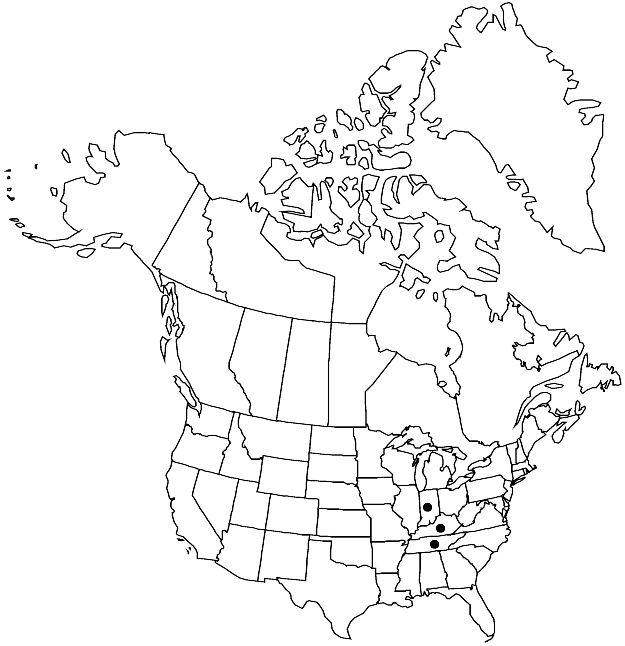Physaria globosa
Novon 12: 323. 2002.
Biennials or perennials; caudex branched, (± woody); densely pubescent, trichomes (sessile), 3–6-rayed, rays distinct and simple or furcate, (in 2 layers, lower layer umbonate, smooth to finely tuberculate, some often with a U-shaped notch). Stems several from base, erect, (arising among leaves of an elongated main axis), to 5 dm (± equal). Basal leaves (shortly petiolate); blade obovate to oblanceolate, (1.5–)2.5–5(–6) cm, margins entire, sinuate to shallowly toothed, or pinnatifid. Cauline leaves (sessile or shortly petiolate); blade oblanceolate to oblong, 1.3–3(–4) cm, (base cuneate), margins entire or repand to dentate. Racemes dense. Fruiting pedicels (usually spreading horizontally, straight), 7–14(–21) mm. Flowers: sepals elliptic or obovate, 2.6–4.1 mm, (median pair thickened apically, cucullate); petals (bright yellow), obovate, 3.5–6.5(–7.5) mm, (margins sinuate). Fruits (sessile or substipitate); globose, often slightly compressed apically, (1–)2–3 mm; valves sparsely pubescent, sometimes pubescent inside, trichomes spreading, 3–5-rayed; ovules 4 per ovary; style 2–3.5(–4) mm. Seeds flattened or plump, (often outer surface hemispherical, inner surface flattened, or both surfaces rounded). 2n = 14.
Phenology: Flowering Mar–May.
Habitat: Open rocky areas, shale at cliff bases, open talus, ledges, open cedar glades
Elevation: 100-300 m
Distribution

Ind., Ky., Tenn.
Discussion
Of conservation concern.
Physaria globosa is possibly introduced in Indiana. A report for Ohio was based on a collection by “Jones,” but that specimen cannot be located.
Selected References
None.